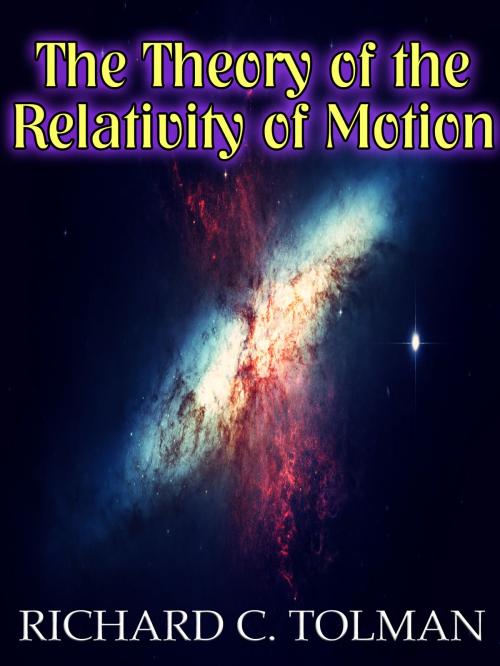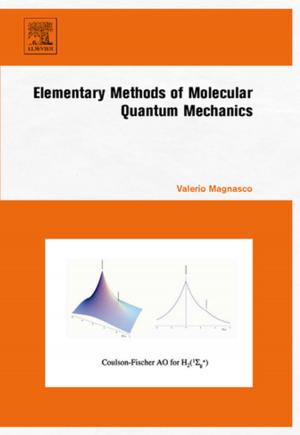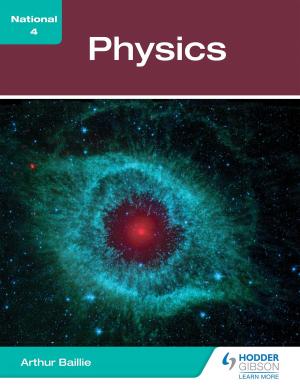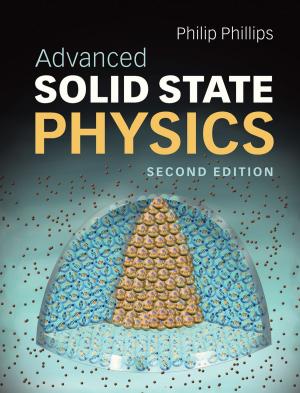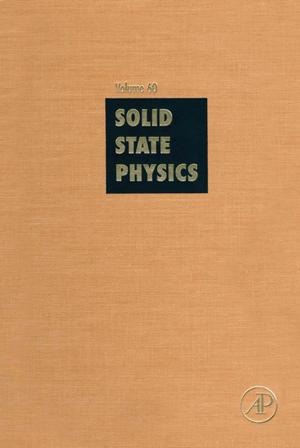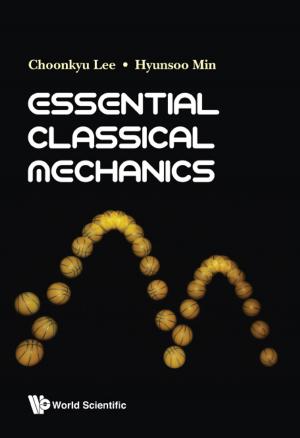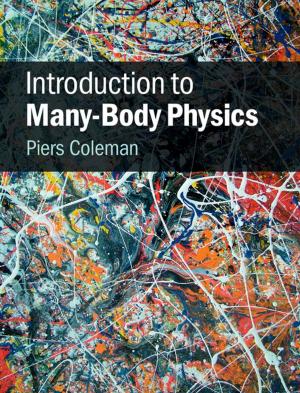The Theory of the Relativity of Motion (Illustrated)
Nonfiction, Science & Nature, Science, Physics, Relativity, Quantum Theory, General Physics| Author: | Richard C. Tolban | ISBN: | 1230000127167 |
| Publisher: | Tolban | Publication: | April 24, 2013 |
| Imprint: | Language: | English |
| Author: | Richard C. Tolban |
| ISBN: | 1230000127167 |
| Publisher: | Tolban |
| Publication: | April 24, 2013 |
| Imprint: | |
| Language: | English |
The Theory of the Relativity of Motion
In the field of physical science, there was a widespread feeling that the days of adventurous discovery had passed forever, and the conservative physicist was only too happy to devote his life to the measurement to the sixth decimal place of quantities whose significance for physical theory was already an old story. The passage of time, however, has completely upset such bourgeois ideas as to the state of physical science, through the discovery of some most extraordinary experimental facts and the development of very fundamental theories for their explanation.
On the experimental side, the intervening years have seen the discovery of radioactivity, the exhaustive study of the conduction of electricity through gases, the accompanying discoveries of cathode, canal and X-rays, the isolation of the electron, the study of the distribution of energy in the hohlraum, and the final failure of all attempts to detect the earth’s motion through the supposititious ether. During this same time, the theoretical physicist has been working hand in hand with the experimenter endeavoring to correlate the facts already discovered and to point the way to further research. The theoretical achievements, which have been found particularly helpful in performing these functions of explanation and prediction, have been the development of the modern theory of electrons, the application of thermodynamic and statistical reasoning to the phenomena of radiation, and the development of Einstein’s brilliant theory of the relativity of motion.
It has been the endeavor of the following book to present an introduction to this theory of relativity, which in the decade since the publication of Einstein’s first paper in 1905 (Annalen der Physik) has become a necessary part of the theoretical equipment of every physicist.
Even if we regard the Einstein theory of relativity merely as a convenient tool for the prediction of electromagnetic and optical phenomena, its importance to the physicist is very great, not only because its introduction greatly simplifies the deduction of many theorems which were already familiar in the older theories based on a stationary ether, but also because it leads simply and directly to correct conclusions in the case of such experiments as those of Michelson and Morley, Trouton and Noble, and Kaufman and Bucherer, which can be made to agree with the idea of a stationary ether only by the introduction of complicated and ad hoc assumptions. Regarded from a more philosophical point of view, an acceptance of the Einstein theory of relativity shows us the advisability of completely remodelling some of our most fundamental ideas. In particular we shall now do well to change our concepts of space and time in such a way as to give up the old idea of their complete independence, a notion which we have received as the inheritance of a long ancestral experience with bodies moving with slow velocities, but which no longer proves pragmatic when we deal with velocities approaching that of light.
The method of treatment adopted in the following chapters is to a considerable extent original, partly appearing here for the first time and partly already published elsewhere._ Chapter III follows a method which was first developed by Lewis and Tolman,y and the last chapter a method developed by Wilson and Lewis.z The writer must also express
his special obligations to the works of Einstein, Planck, Poincaré, Laue, Ishiwara and Laub.
It is hoped that the mode of presentation is one that will be found well adapted not only to introduce the study of relativity theory to those previously unfamiliar with the subject but also to provide the necessary methodological equipment for those who wish to pursue the theory into its more complicated applications.
The Theory of the Relativity of Motion
In the field of physical science, there was a widespread feeling that the days of adventurous discovery had passed forever, and the conservative physicist was only too happy to devote his life to the measurement to the sixth decimal place of quantities whose significance for physical theory was already an old story. The passage of time, however, has completely upset such bourgeois ideas as to the state of physical science, through the discovery of some most extraordinary experimental facts and the development of very fundamental theories for their explanation.
On the experimental side, the intervening years have seen the discovery of radioactivity, the exhaustive study of the conduction of electricity through gases, the accompanying discoveries of cathode, canal and X-rays, the isolation of the electron, the study of the distribution of energy in the hohlraum, and the final failure of all attempts to detect the earth’s motion through the supposititious ether. During this same time, the theoretical physicist has been working hand in hand with the experimenter endeavoring to correlate the facts already discovered and to point the way to further research. The theoretical achievements, which have been found particularly helpful in performing these functions of explanation and prediction, have been the development of the modern theory of electrons, the application of thermodynamic and statistical reasoning to the phenomena of radiation, and the development of Einstein’s brilliant theory of the relativity of motion.
It has been the endeavor of the following book to present an introduction to this theory of relativity, which in the decade since the publication of Einstein’s first paper in 1905 (Annalen der Physik) has become a necessary part of the theoretical equipment of every physicist.
Even if we regard the Einstein theory of relativity merely as a convenient tool for the prediction of electromagnetic and optical phenomena, its importance to the physicist is very great, not only because its introduction greatly simplifies the deduction of many theorems which were already familiar in the older theories based on a stationary ether, but also because it leads simply and directly to correct conclusions in the case of such experiments as those of Michelson and Morley, Trouton and Noble, and Kaufman and Bucherer, which can be made to agree with the idea of a stationary ether only by the introduction of complicated and ad hoc assumptions. Regarded from a more philosophical point of view, an acceptance of the Einstein theory of relativity shows us the advisability of completely remodelling some of our most fundamental ideas. In particular we shall now do well to change our concepts of space and time in such a way as to give up the old idea of their complete independence, a notion which we have received as the inheritance of a long ancestral experience with bodies moving with slow velocities, but which no longer proves pragmatic when we deal with velocities approaching that of light.
The method of treatment adopted in the following chapters is to a considerable extent original, partly appearing here for the first time and partly already published elsewhere._ Chapter III follows a method which was first developed by Lewis and Tolman,y and the last chapter a method developed by Wilson and Lewis.z The writer must also express
his special obligations to the works of Einstein, Planck, Poincaré, Laue, Ishiwara and Laub.
It is hoped that the mode of presentation is one that will be found well adapted not only to introduce the study of relativity theory to those previously unfamiliar with the subject but also to provide the necessary methodological equipment for those who wish to pursue the theory into its more complicated applications.
